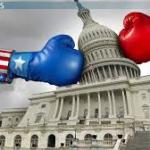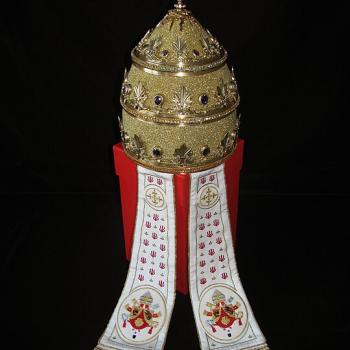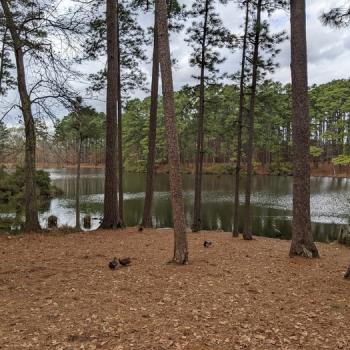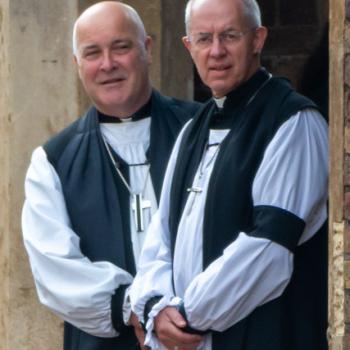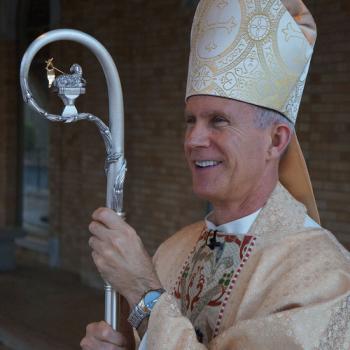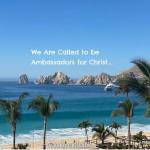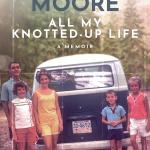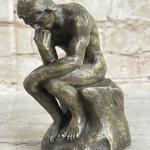Thanksgiving may well be your favorite holiday. For a lot of Americans, it exudes a kind of a warm, sentimental glow, fueled by the twin coals of food and family. I’m not in that category: I was born in England, and moving to the US at age 8, I was only partially inducted into the cult of Thanksgiving. The strange sweet-savory food combinations (sweet potato casserole with streusel topping and marshmallows, weird jello “salads”) combined with my general aversion to roast turkey (too dry) and lack of American family to make the holiday a fun but not particularly exciting occasion that intruded on the academic calendar.
In adulthood, married to a native Montanan who loves Thanksgiving and is an amazing cook and armed with some new culinary options (smoked turkey from Bodacious Bar-B-Q, my wife’s amazing sourdough) and the chance to enjoy football (only somewhat impeded by my middle son’s demands for Bluey) my experience has improved.
As a historian of American religion, what I find most interesting about Thanksgiving is its very flexible religious tenor. It is, in its origins, a celebration rooted in New England Protestantism that has become the perfect post-Protestant (and post-Christian) holiday.
The History of Thanksgiving
In the nineteenth century, Thanksgiving expanded from a regional New England holiday into a nationwide observance. In its original regional form, it had borne strongly religious connotations, a descendant of patterns of designated fast days and days of thanksgiving that were a product of the region’s Reformed heritage. These are sometimes talked about as a distinct Puritan practice, but this is inaccurate. Similar providentialist beliefs were broadly shared at least across Reformed Protestantism, including in the Church of England. Designated fast days or days of humiliation and thanksgiving days were routinely proclaimed by British monarchs, at least into the Victorian period.
Over time, in New England, discrete thanksgiving days proclaimed to thank God for particular blessings became routinized as an annual holiday, akin to Dankdag in the Netherlands or the harvest festivals that are common across Europe (although celebrated later, in late November or early December, so much later than harvest). By the early nineteenth century, New Englanders would attend church for a Thanksgiving service in the morning before feasting in the afternoon (whether sports were also a common occurrence was up for debate). As most Yankee Protestants did not celebrate Christmas until the mid-nineteenth century, Thanksgiving basically served as the major winter holiday, spreading to the other northern states as New Englanders migrated into New York and the Midwest.
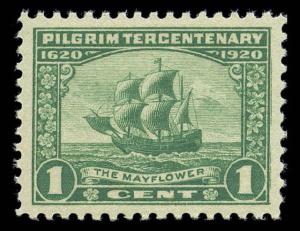
Whether this celebration dates back to Plymouth and the Mayflower in any direct way is highly questionable. The historian James W. Baker, whose 2009 book Thanksgiving: The Biography of an American Holiday covers the origin of the tradition, argues that the Plymouth origin story is an etiology (a mythical explanation for why something exists). New Englanders seem to have forgotten that the occasion ever took place, in part because the section of Mourt’s Relation (published in 1622) that described the “original” feast was not republished until 1822, accessible only in the very rare first edition.
Nineteenth-century New Englanders, looking for an origin for their annual tradition amid a renaissance of interest in the founders of Plymouth Colony (now dubbed the “Pilgrim Fathers”), rediscovered the story and made it central to their winter holiday. When a Unitarian minister, Alexander Young, edited a new edition of Mourt’s Relation that was published in 1841, he added a note that described the 1621 feast as “the first Thanksgiving, the harvest festival of New England.”
Claiming the Heritage of the Pilgrims
As the “Puritans” became increasingly vilified as persecutors, the “Pilgrims” became a more palatable set of ancestors for a democratic America committed to religious freedom, even if the contrast rested on an incredibly flimsy historical foundation (the Separatists who settled Plymouth were simply radical Puritans who had even less patience for practices they considered idolatrous than the Puritans of Massachusetts Bay).
Both Unitarians and Trinitarians claimed the Pilgrims. For Unitarians, they were bold pioneers unafraid of new religious experiments. For Trinitarians, they were solid proponents of orthodoxy, fleeing to the New World to maintain the purity of their faith. If you visit Plymouth, there’s a Unitarian church (descendant of the original Pilgrims’ church) next door to a United Church of Christ congregation (which broke away to maintain trinitarian orthodoxy in 1801). The UCC building bears a plaque declaring itself the true progenitor of the faith of the Pilgrims, in comparison to the heretics next door.
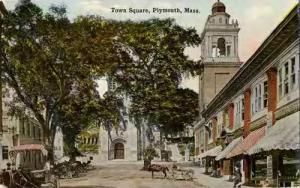
Since the nineteenth-century re-foundation of Thanksgiving on the basis of the Pilgrims’ 1621 feast, the importance of the Pilgrims to the celebration has been continuously inflated. When Abraham Lincoln made Thanksgiving a federal holiday in 1863, he did not mention Plymouth or the Pilgrims. In fact, the annual presidential proclamations that followed Lincoln rarely ever mentioned the purported Pilgrim origins of the holiday, although unlike Andrew Johnson, who in 1867 called it a “recent custom,” his successors generally referred to long-standing custom going back to colonial history. In 1905, Teddy Roosevelt obliquely referenced the Pilgrims (“when nearly three centuries ago…”), and in 1939, Franklin Delano Roosevelt finally named the Pilgrims explicitly.
Presidents and Pilgrims
Beginning in the 1950s, presidents have cited the Pilgrims and made the Plymouth story central to their Thanksgiving proclamations far more frequently. You can find them all here if you’re curious. For students of American religious history, this is hardly surprising. As the Cold War dawned, American leaders emphasized American religiosity over against godless Communism. We adopted “In God We Trust” as a national motto, introduced “under God” into the Pledge of Allegiance, and emphasized that the United States was a “trifaith” or “Judeo-Christian” nation. Enshrining a group of religious dissenters fleeing persecution at the center of our national story just made sense.
Dwight D. Eisenhower’s declaration in 1954 made religious liberty the major bequest of the Pilgrims: “We are grateful that our beloved country, settled by those forebears in their quest for religious freedom, remains free and strong, and that each of us can worship God in his own way, according to the dictates of his conscience.” Barack Obama’s declaration in 2008 emphasized the “spirit [that] brought together the newly arrived Pilgrims and the Wampanoag tribe…in an autumn harvest feast centuries ago.”
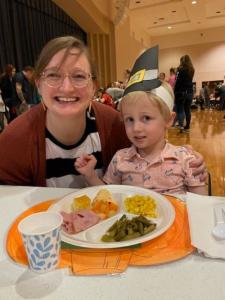
Perhaps these are the two most important lessons that continue to be drawn from the Pilgrims: America as a place where religious freedom and cross-cultural neighborliness can be achieved. And it may be for that reason that Thanksgiving is such an accessible holiday for Americans of whatever background or religion. In part because the actual Plymouth Separatists and Wampanoag Indians have been so thoroughly abstracted and idealized from their original context, the myth of Thanksgiving can be easily expressed in Catholic or Jewish (or Muslim or Hindu, or secular) terms.
The only major detractors from this vision have been the Native American activists who in 1970 initiated the National Day of Mourning, timed to coincide with Thanksgiving. The protests, organized by the United American Indians of New England, have continued for decades, centered on provocatively challenging the festivities that have developed at Plymouth and foregrounding the destruction that colonization wrought on the Wampanoags and then other indigenous tribes. The critique only makes sense, of course, because of the modern centrality of the Pilgrim myth to Thanksgiving.
A Non-Religious Holiday
Despite its previous religious valence and the half-hearted cultural focus on giving thanks, perhaps even to God (or at least “giving back” to our communities), Thanksgiving is really no longer a religious holiday. Even recent presidential proclamations seem to think that Americans sometimes celebrate the holiday in church, but I have seen no evidence that these services actually exist. Most American Protestant churches don’t even offer Christmas Day services (and more than a few cancel when Christmas falls on a Sunday); I find it hard to believe they would have the temerity to challenge the trifecta of family, food, and football on Thanksgiving.
Starting in the mid nineteenth century, colonial New England Protestant Thanksgiving became gradually reinterpreted as a celebration of the Pilgrims, originally seen as Protestant heroes (although their exact Protestant virtues depended on theological preference). Next the Pilgrims became depersonalized and reinterpreted as vectors for religious freedom and coexistence, allowing them to become appropriate heroes of the interreligious, Judeo-Christian America of the Cold War. Tracy McKenzie shows in his excellent 2013 book The First Thanksgiving: What the Real Story Tells Us About Loving God and Learning from History how Americans continuously reinterpreted the Thanksgiving story to address the anxieties of the moment (immigration at the turn of the century, war and peace for much of the twentieth century).
In part because of its endless reinterpretability, unlike Americans’ other favorite holiday, Christmas, which cannot but be grounded in the Christian story to some extent, even the most anxious about causing offense have no qualms about wishing their neighbors a Happy Thanksgiving. It has almost no Christian overtones anymore and thus remains basically inoffensive and pan-American, or at least has until now.
Whether our modern Thanksgiving, created in that very different context, will persist in its present form, I can’t claim to know. Certainly, there is an increasing queasiness about celebrating paragons of settler colonialism on the Left. But at the same time, rejecting Thanksgiving is not like boycotting Columbus Day. Outside of a few vocal Italian-American heritage groups, Columbus Day doesn’t mean much to most Americans. Thanksgiving has a lot of fuzzy feelings attached. I don’t think it’s going anywhere, even if its founding myths are reframed once again.




